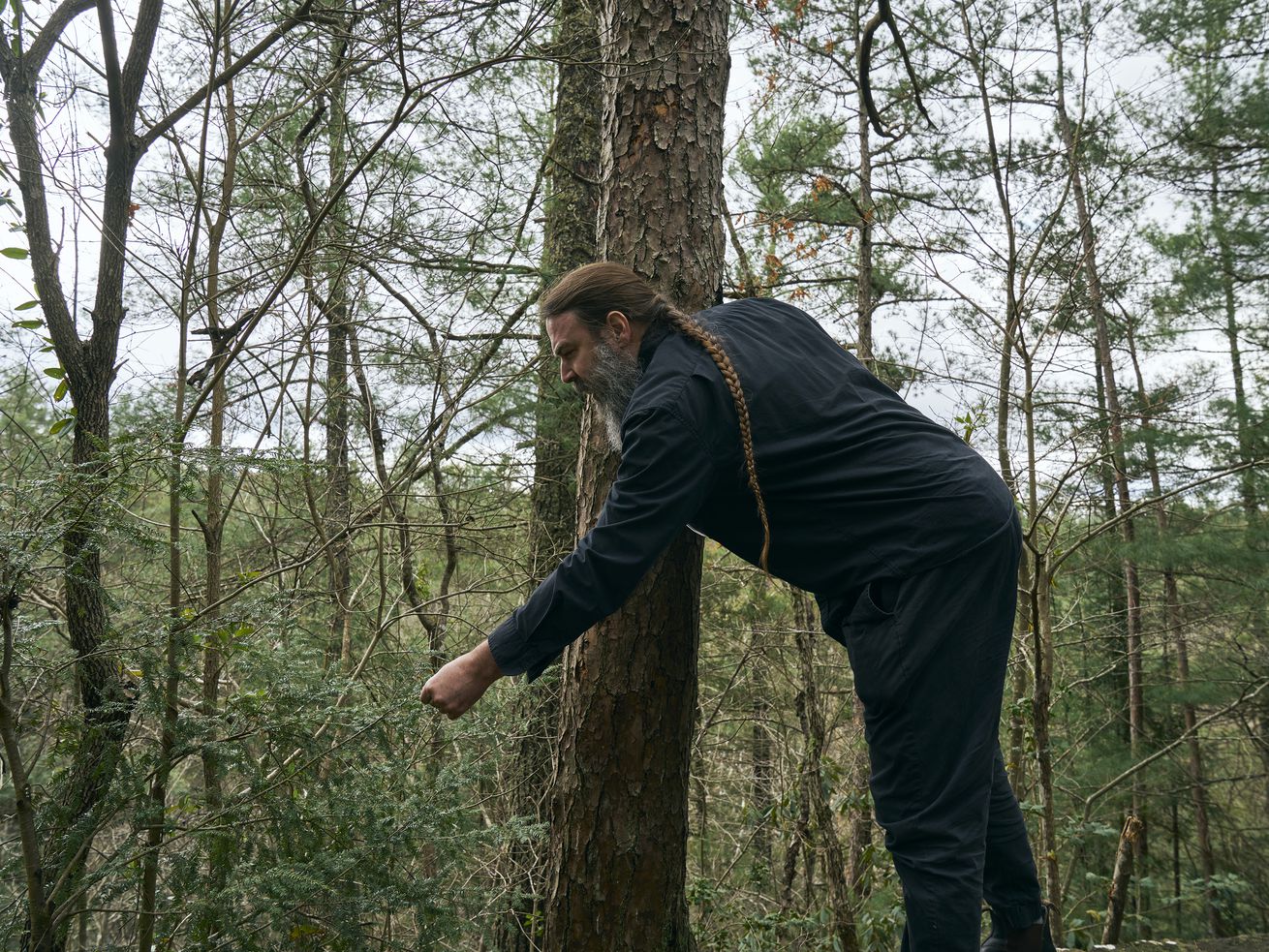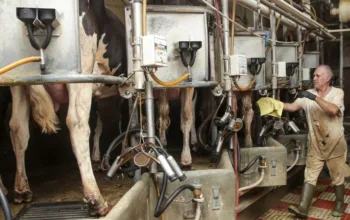Even as ginseng, St. John’s wort, and other herbs grow in popularity, the region is struggling to keep its age-old practice of herbalism alive for a new generation.
/cdn.vox-cdn.com/uploads/chorus_asset/file/21899595/VOX_The_Highlight_Box_Logo_Horizontal.png)
Part of the May 2022 issue of The Highlight, our home for ambitious stories that explain our world.
Andrew Bentley paused at the base of a hemlock tree during a recent hike in Red River Gorge, an hour east of Lexington, Kentucky, in Daniel Boone National Forest. He ran his fingers over a spongy mat of pale deermoss with fondness, as if greeting an old friend. A moment later, he stopped again. “Pipsissewa!” he exclaimed, pointing at a crop of tiny, star-shaped flowers poking out of the earth. “You’d never see this in an herb shop.”
Bentley is 45, with a bushy gray beard, and a quiet, philosophical air. A fourth-generation Appalachian herbalist who sources almost all of his medicinal tinctures in these woods, he is no stranger to the outdoors. He grew up in neighboring Lee County (population: 7,395), and as a child, he often roamed the dense, rolling hillsides with his three brothers. “Occasionally, you’d come across someone’s marijuana patch and they’d shoot at you,” he said, laughing. “It’s a lawless place. A lot of freedom.”
It was early spring, and the leaves hadn’t all come in, but that didn’t stop Bentley from pointing out dangling strands of beard lichen, plus jewelweed, and pine needles, which he’s fond of boiling as a decongestant. Families with children and dogs passed him on the trail, but his attention was fixed entirely on the moss, ferns, violets, and soil. Every now and then, he placed his hands on a tree trunk and waited, listening.
/cdn.vox-cdn.com/uploads/chorus_asset/file/23447677/20220307_Appalachian_herbalists__1202.jpg)
Stacy Kranitz for Vox
/cdn.vox-cdn.com/uploads/chorus_asset/file/23447681/20220307_Appalachian_herbalists__8.jpg)
Stacy Kranitz for Vox
Bentley isn’t a doctor. But with about 30 years as a practicing herbalist under his belt (he began treating people when he was just 16), he has attracted a following of people who turn to his plant-based remedies, hoping to relieve chronic pain, high blood pressure, anxiety, and depression. If that sounds far-fetched, consider that roughly a third of all drugs come from plants, and that supermarkets such as Whole Foods now offer elderberry syrup (a supposed immune booster) and ginger tea (a digestion aid) alongside the Tylenol and Pepto Bismol.
Folk medicine has long been lumped into the category of superstition — equivalent to faith healing and prayer candles — but the widening audience has made it easier for herbal practices like Bentley’s to thrive.
“Until the ’90s, the practice of herbal medicine was a gray area legally,” Bentley explained. That changed in 1994, when the federal Dietary Supplement Health and Education Act placed herbs in a separate category from drugs, creating a regulatory framework for them under the Food and Drug Administration and effectively paving the way for the modern herbal supplement industry to flourish. The legislation spurred clinical trials of herbs like St. John’s wort, ginkgo biloba, and garlic, and normalized the use of plants in wellness, but it has also concerned health experts, who contend that the regulation of the industry is lax. For example, in 2015, the New York state attorney general accused four herbal supplement brands of mislabeling products as containing herbs when testing showed they contained none at all.
The practice of herbalism is simpler here. When Bentley opened his Lexington practice in 2000, he was surprised by how many clients fondly recalled seeing herbs in their homes. “I kept hearing, ‘My grandmother used this stuff, but she didn’t teach anyone before she died.” Residents who had grown up in rural eastern Kentucky, like him, didn’t view herbal treatments as a novelty, but as something entirely familiar.
/cdn.vox-cdn.com/uploads/chorus_asset/file/23447694/20220307_Appalachian_herbalists__1072.jpg)
Stacy Kranitz for Vox
President Lyndon B. Johnson once referred to the remote Appalachian mountains as “a region apart.” Life here has had a way of eluding the mainstream. Poverty in some parts reaches 40 percent of the population, according to recent data. Crude stereotypes of Appalachian people (see: Deliverance) dominate many Americans’ understanding of this sizable stretch of the country, and those prejudices have been hard to reverse. These mountains, however, have been instrumental in supplying the nation with resources from timber and coal to tobacco, and, at one time, marijuana.
American ginseng is another such resource. In the 1700s, the natural stimulant, which grows wild throughout these mountains, made history as one of the first US products exported to China, where it remains highly sought after today (at a going rate of between $500 and $1,000 a pound, it’s also the most lucrative Appalachian herb).
Mary Hufford, a visiting professor of folklore studies at Ohio State University, explained that ginseng was often a trusted income source for Appalachians. “In times of bust, they’d get out their trowels and dig ginseng.” It helped coal miners stay afloat during strike periods, and ginseng buyers would line up ready to pay cash for the freshly dug roots.
At the same time, Hufford said, an unspoken code of ethics helped prevent the overharvesting of ginseng. Because the plant takes up to eight years to reach maturity, foragers are careful to leave more than they take. Hufford recalled speaking to Dennis Dickens, a 90-year-old resident in Big Coal River, West Virginia, who used to snip off the young, berry-less stems to keep the plants hidden from impatient diggers.
In recent decades, the collapse of industries such as coal and tobacco has led to poaching. Entire ginseng patches are ripped out of the ground to make a quick buck. Theft has become so problematic for forest farmers that many have installed security cameras just to protect their crops.
Katie Commender, an agroforestry expert and director of the Appalachian Harvest Herb Hub, grew up around such home remedies. She spent weekends with her grandparents in Blackwater, Virginia, gathering medicinal herbs from the field. “They never went to the doctor,” she said, turning instead, as many have for generations, to their own vast backyard. The mixed mesophytic forests of the Appalachians are one of the most biodiverse regions in America, yielding dozens of plants that simply don’t grow anywhere else. Not just ginseng, but also black cohosh, goldenseal, and slippery elm — botanical powerhouses available at no cost to anyone who calls these mountains home.
These days, fewer and fewer people do. In the 1950s and 1960s, approximately 7 million Appalachians left the mountains for northern states like Michigan and Ohio looking for factory jobs. Now, older generations of commercial harvesters have a hard time finding apprentices to take over the trade. “It’s back-breaking work,” Commender admitted, noting that wild harvesters often must haul 50-pound sacks through the woods for days at a time to source enough herbs to turn a profit. “There aren’t as many people who want to do that work anymore. You can make more at Walmart.”
Commender is now developing a pilot program, launching this fall in Duffield, Virginia, to train new generations of wild herb harvesters. The goal, she said, is to “create a more robust economy” that links wholesale manufacturers with foragers who are well-versed in sustainability. This will ensure the forest’s finite supply doesn’t run out, and also, hopefully, keep this centuries-old practice intact for future generations.
/cdn.vox-cdn.com/uploads/chorus_asset/file/23447710/GettyImages_1315551141.jpg)
Bill Uhrich/MediaNews Group/Reading Eagle via Getty Images
Right now, the culture seems particularly receptive to healers like Bentley. From sound baths to yoni eggs to turmeric lattes, Americans have embraced alternative practices in tandem with conventional medicine, and herbs are no exception. Herb supplement sales saw double-digit growth in 2020, according to the Nutrition Business Journal, and the pandemic has caused demand for botanicals like echinacea (purported to boost immune function) and elderberry (a folk remedy flu-fighter) to soar.
Rebecca Linger, the co-author of A Guide to the Toxicology of Select Medicinal Plants and Herbs of Eastern North America, spent seven years researching the science behind Appalachian plant remedies. Some medicinal claims, she said, have turned out to be accurate. In her book, she cites joe-pye weed, traditionally ingested as a tea to relieve gallstones, as an example of a plant whose medicinal properties “are borne out when you look at the chemistry.”
“Natural,” however, is not necessarily safe, she warned. “The marketplace for natural medicine has really skyrocketed in the past few years. People want to treat themselves naturally, so they are buying a lot of products from the herbal aisle without knowing how they work.”
The herb boneset, for example, is often used as a fever reducer. But when mixed with Tylenol, compounds in boneset, known as pyrrolizidines, can react with Tylenol to cause serious liver damage. Another hazard are sedative herbs: For someone with low blood pressure, mixing such herbs with the wrong medication could result in excessively lowering blood pressure.
Linger recently began a class on folk medicine at the University of Charleston, West Virginia, where she teaches, so her students will learn how to navigate instances in which patients have mixed and matched natural products with their medication. “Pharmacists and doctors end up saying you shouldn’t take any herbals. It’s not because they don’t think they work, it’s because they don’t understand them.”
Health experts, too, warn that such supplements simply haven’t “received the same scientific scrutiny.”
/cdn.vox-cdn.com/uploads/chorus_asset/file/23447740/20220307_Appalachian_herbalists__336.jpg)
In pockets of Appalachia, understanding herbs was often as simple as stepping outside. A direct path to the forest meant constant access not just to herbs but all sorts of provisions: fruit, vegetables, honey, and wild game. As these practices — boiling ginseng root, picking chamomile flowers — were refined over the years, they became part of the folklore. (Texts like Linger’s may offer a deeper understanding of the chemistry behind medicinal plants, but that data is bolstered by centuries of lived experience.)
The awareness of certain plants and how they function can only be learned through careful observation of the land over multiple generations, explained Hufford. “When you have a cycle that exceeds the span of individual human lives, it’s so important that families preserve the knowledge.”
/cdn.vox-cdn.com/uploads/chorus_asset/file/23447729/20220307_Appalachian_herbalists__690.jpg)
/cdn.vox-cdn.com/uploads/chorus_asset/file/23447727/20220307_Appalachian_herbalists__754.jpg)
/cdn.vox-cdn.com/uploads/chorus_asset/file/23447731/20220307_Appalachian_herbalists__1084.jpg)
The Appalachians are some of the oldest mountains in the world, so it stands to reason that Indigenous people were the first ones to synthesize knowledge of native plants in the region. However, due to the forced removal of Cherokee, Chickasaw, and Shawnee tribes in the early 1800s, evidence of their hand in Appalachian plant medicine is startlingly absent. “There’s a historical hole,” Hufford said.
What has remained, for better or worse, are the deep connections Appalachians have forged with this ecology. Herbalists often act as a go-between, connecting plants to the residents who depend on them. Bentley, who inherited his herbal know-how from his father and grandfather, said he is all too aware of the importance of passing down this tradition. This year, he launched a year-long herbalist training program that includes four guided herb walks in the forest; he also offers webinars through the American Herbalists Guild).
“For most of history, knowledge about herbal medicine has been handed down orally,” he said. “Storytelling has always been a part of that, and still is.” Often, when he’s leading students through the hickory and pine groves, he will include a narrative element to make a particular herb more interesting: “Like how Achilles used yarrow to treat injuries in the Iliad,” he said. Details like these illustrate what a plant is used for, and also establish just how long these practices have been around. “Narratives,” he said, “stay with people.”
Alex Schechter is a Los Angeles-based writer focused on the natural world. His work has appeared in National Geographic, Monocle, the New York Times, and Lonely Planet.
Author: Alex Schechter
Read More



